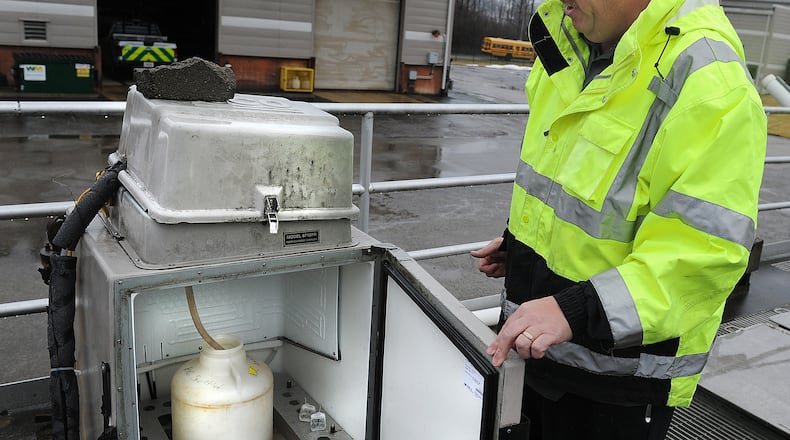At the Greene County Water Resource Recovery Facility in Beavercreek, samples are collected automatically from untreated sewage twice a week. These samples are refrigerated and then transported to a lab at Ohio State University for testing. Greene County also provides additional facility data at the time of each sample, such as flow rate, precipitation, pH and temperature.
As a metric of pandemic spread, testing people with symptoms lags behind the actual spread of COVID-19. However, wastewater treatment plants can track the spread of the virus approximately seven days before a surge in cases or hospitalizations.
Greene County joined the state network in December of 2020, and so far, the data has matched community caseloads almost exactly.
“We were contacted by the state of Ohio to gauge our interest, and felt like it would be a good investment of time and resources for the betterment of the state and local health departments. It was an evolving science, and we are always supportive of research and development when it carries minimal risk and expenditure on our end,” said Jason Tincu, director of Greene County sanitary engineering.
The Ohio Department of Health publishes the information on its website and uses the data to track the virus over time. Although wastewater monitoring cannot predict the number of people currently infected in communities, it can indicate the potential increase or decrease of disease spread, and identify the variants circulating in the population.
In December 2021, the Ohio Water Resources Center at Ohio State University identified the first three cases of the Omicron variant in the state.
“It’s used as an early warning system,” said Water Resource Center associate director Zuzana Bohrerova, who heads the wastewater project. “ODH is able to send a warning to local health districts and provide resources if the community asks. It’s an exciting tool.”
Resources provided by the state include everything from tests and vaccines to additional staffing, Bohrerova added.
Local agencies participating in the monitoring network include Greene County; Dayton; the Tri-Cities North Regional Wastewater Authority that services Vandalia, Tipp City and Huber Heights; and two Montgomery County wastewater treatment plants in Kettering and West Carrollton.
The success of using wastewater surveillance data to track COVID-19 cases might be used to track the spread of other diseases in the future, including influenza and foodborne illness.
“We, as an industry, are prepared to participate long term in this program,” Tincu said. “The bigger question will be where does the funding come from? Will it continue to come from the state or will it be mandated at the local level? In our opinion, this data will serve as the primary indicator of virus prevalence and risk for Ohio communities going forward, especially since it comes before caseloads.”
About the Author

